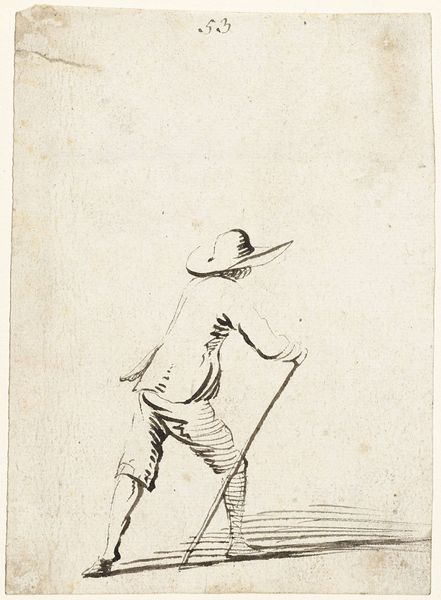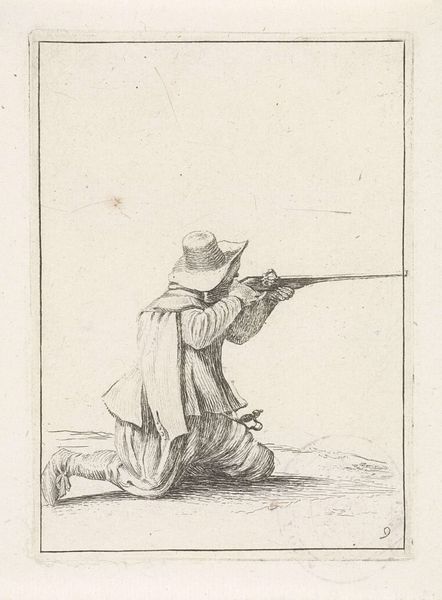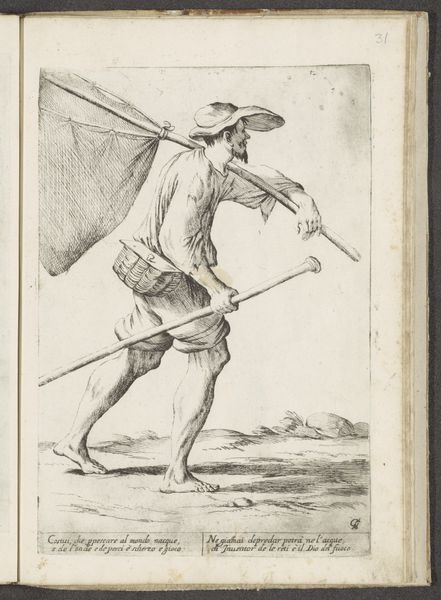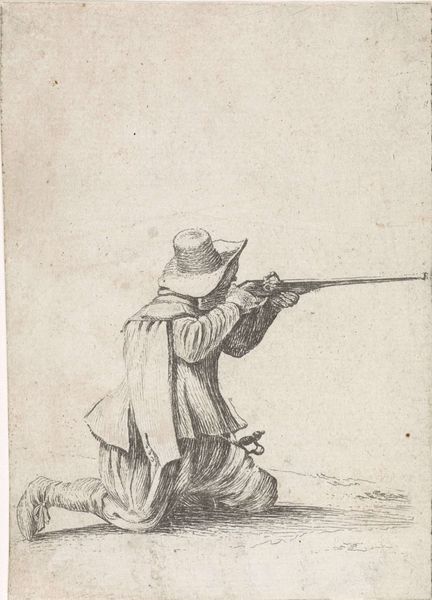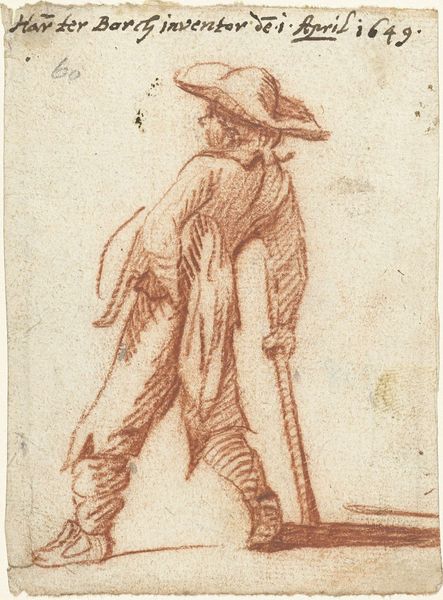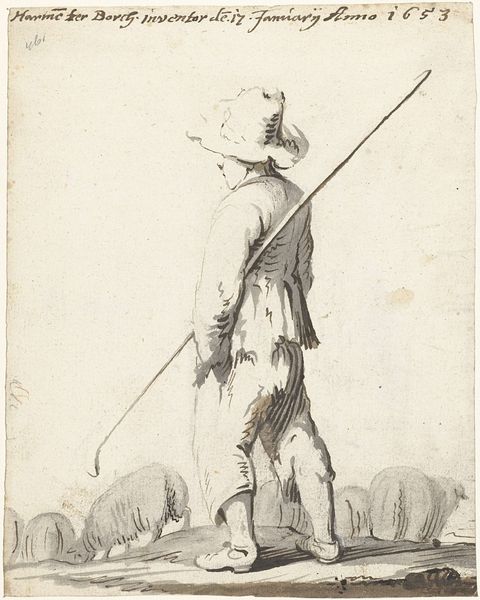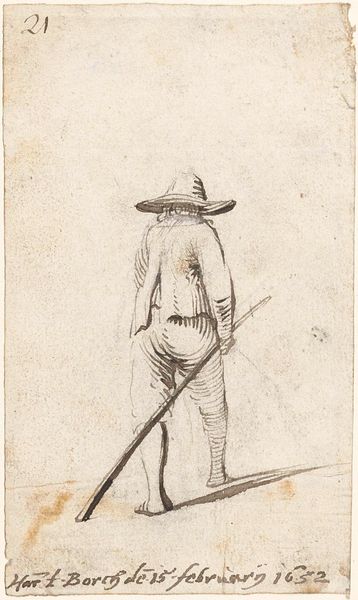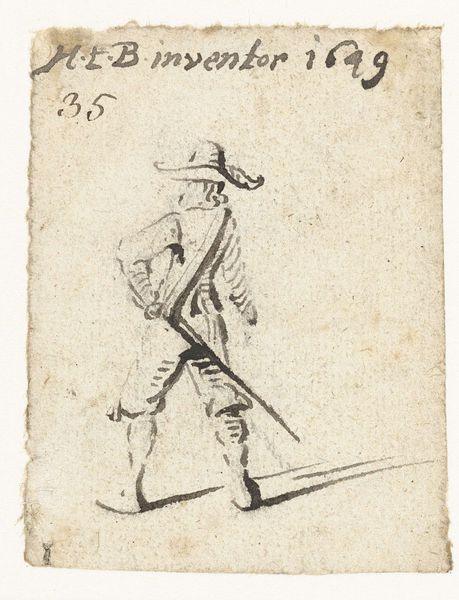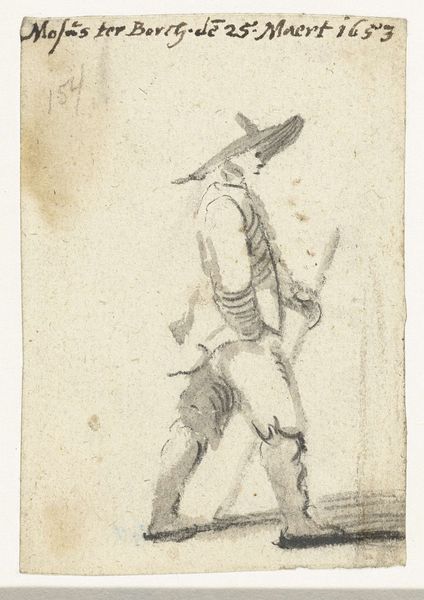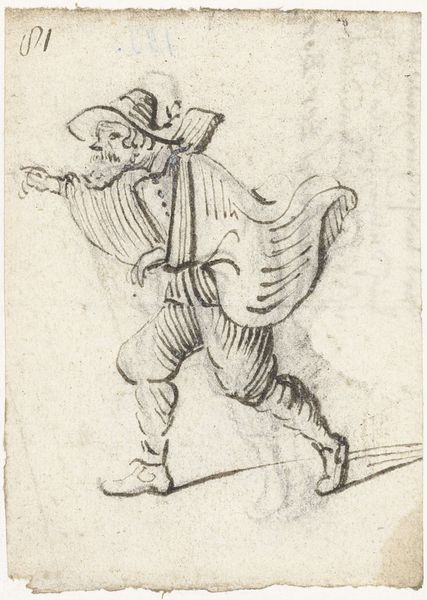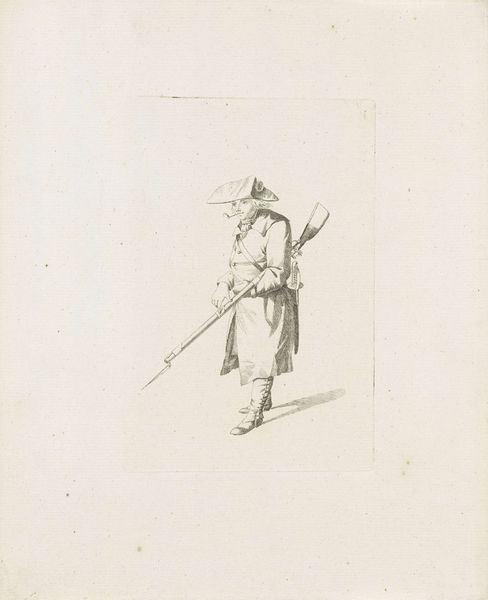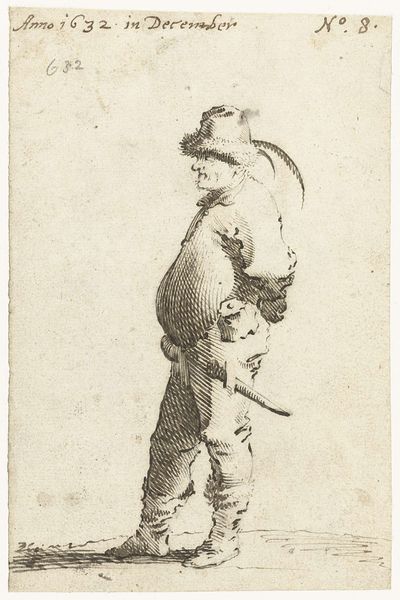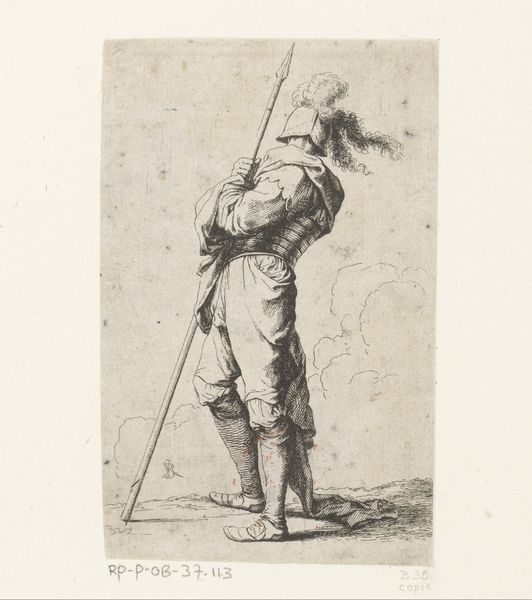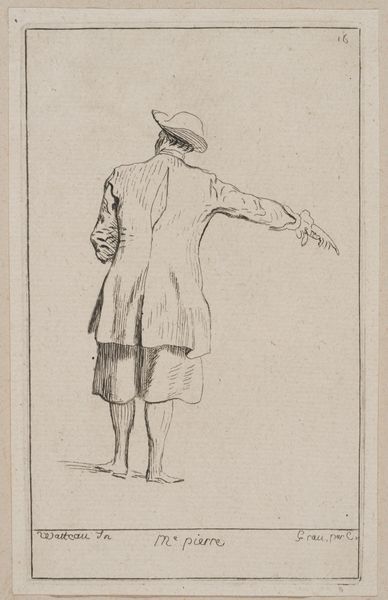
drawing, paper, ink, pen, charcoal
#
portrait
#
drawing
#
imaginative character sketch
#
light pencil work
#
quirky sketch
#
narrative-art
#
baroque
#
dutch-golden-age
#
paper
#
personal sketchbook
#
ink
#
sketchwork
#
ink drawing experimentation
#
pen-ink sketch
#
line
#
sketchbook drawing
#
pen
#
genre-painting
#
charcoal
#
storyboard and sketchbook work
#
sketchbook art
Dimensions: height 162 mm, width 120 mm
Copyright: Rijks Museum: Open Domain
Curator: This drawing, "Man die een paal draagt," or "Man Carrying a Pole," comes to us from Harmen ter Borch, dating possibly to 1649. It's rendered in pen, ink, and charcoal on paper and is currently held at the Rijksmuseum. What are your first thoughts? Editor: Well, my immediate impression is one of stark simplicity, almost to the point of austerity. The line work is so economical. And the man himself, the bearer of this enormous pole… he feels burdened, yet somehow purposeful. Curator: I see that too. Formally, the composition hinges on the strong diagonal created by the pole, slicing through the pictorial space. Note how Ter Borch uses light and shadow—the darker strokes defining the man’s figure, the lighter touches giving depth to his form, especially his clothing. Editor: Absolutely. The pole itself acts as a rather potent phallic symbol, suggesting virility and strength, though perhaps challenged or even subjugated by the weight it bears. Also, consider the man's hat, obscuring his gaze – there is a sense of mystery, as though we are privy to an archetypal journey. What do you think? Curator: An intriguing interpretation. Perhaps. I lean more toward the pure compositional aspects. The diagonal stress sets up a powerful tension, directing our eye, while the man’s forward motion—suggested by the positioning of his legs—implies a narrative unfolding outside the frame. Also observe that the rendering of the pole is slightly off axis relative to the figure. This reinforces that the line describes the form but also carries the idea and form itself in space. Editor: I agree, the composition generates tension, and the lines add character! Considering Dutch genre painting of the Golden Age, there are multiple levels here. Everyday life infused with allegorical and perhaps even satirical undertones, particularly concerning labor and masculinity. This pole also references a larger symbolic network— burdens carried, journeys undertaken, all laden with deeper moral significance for the viewer of the time. Curator: Fascinating, how the object’s form is inseparable from its implied function and potential psychological and cultural weight. For me, Ter Borch achieves this density and impact with astonishing efficiency—through the deliberate placement of lines and tones, activating both figure and the ground that it traverses. Editor: Yes, Ter Borch uses minimal detail to maximum effect. And that anonymous man with his hefty pole? He morphs into everyman, his struggle somehow both deeply personal and profoundly universal. A striking little sketch.
Comments
No comments
Be the first to comment and join the conversation on the ultimate creative platform.
